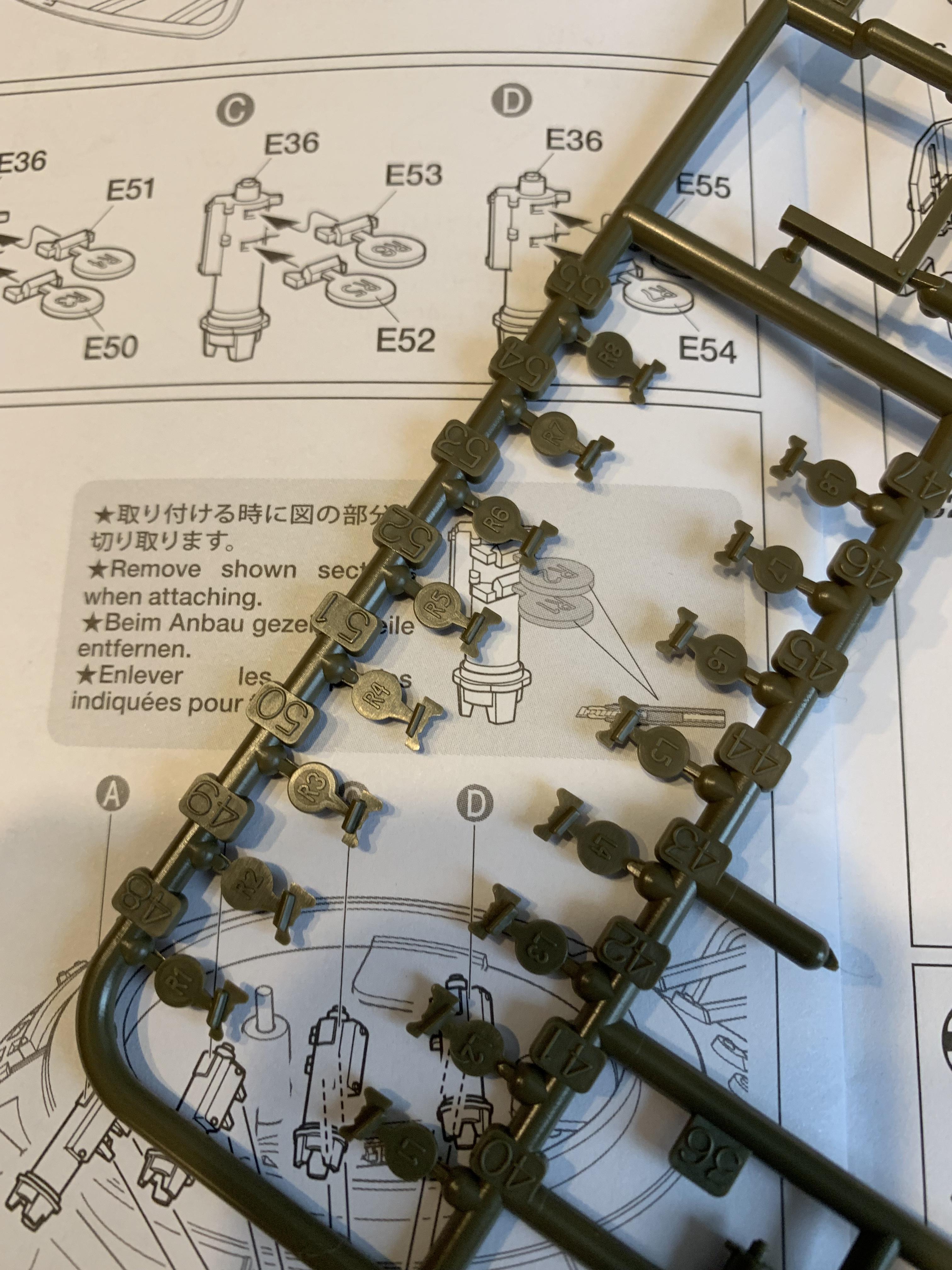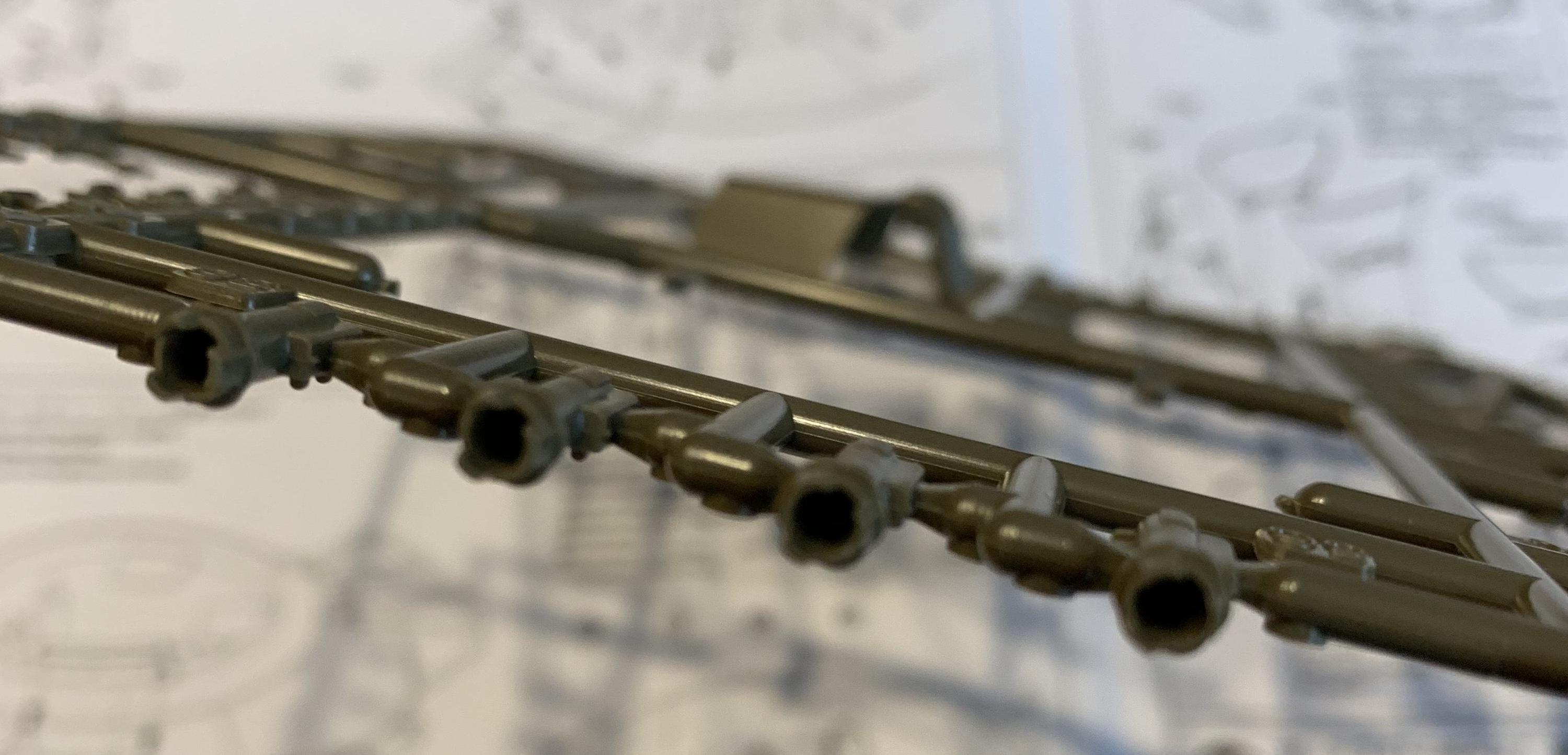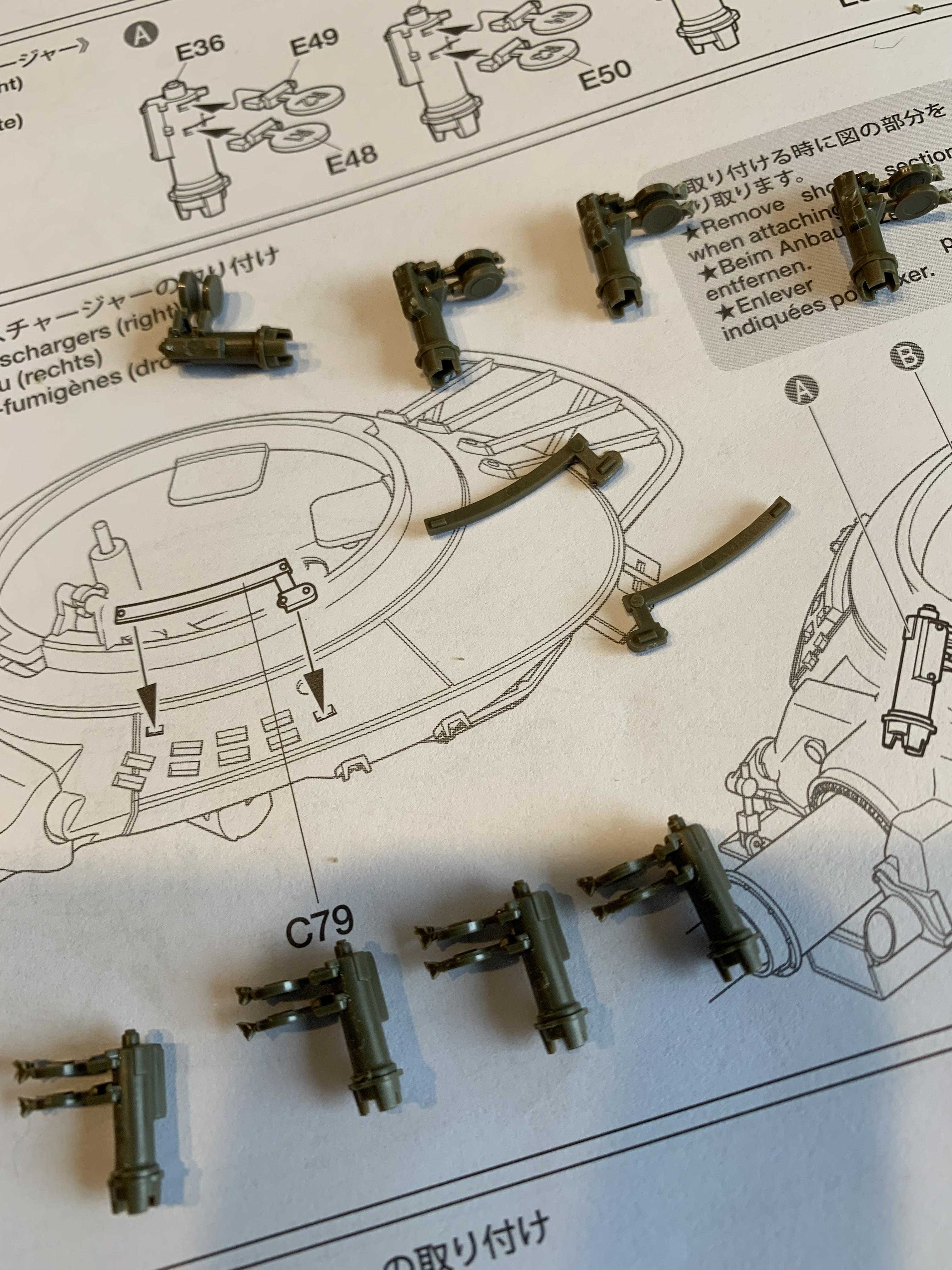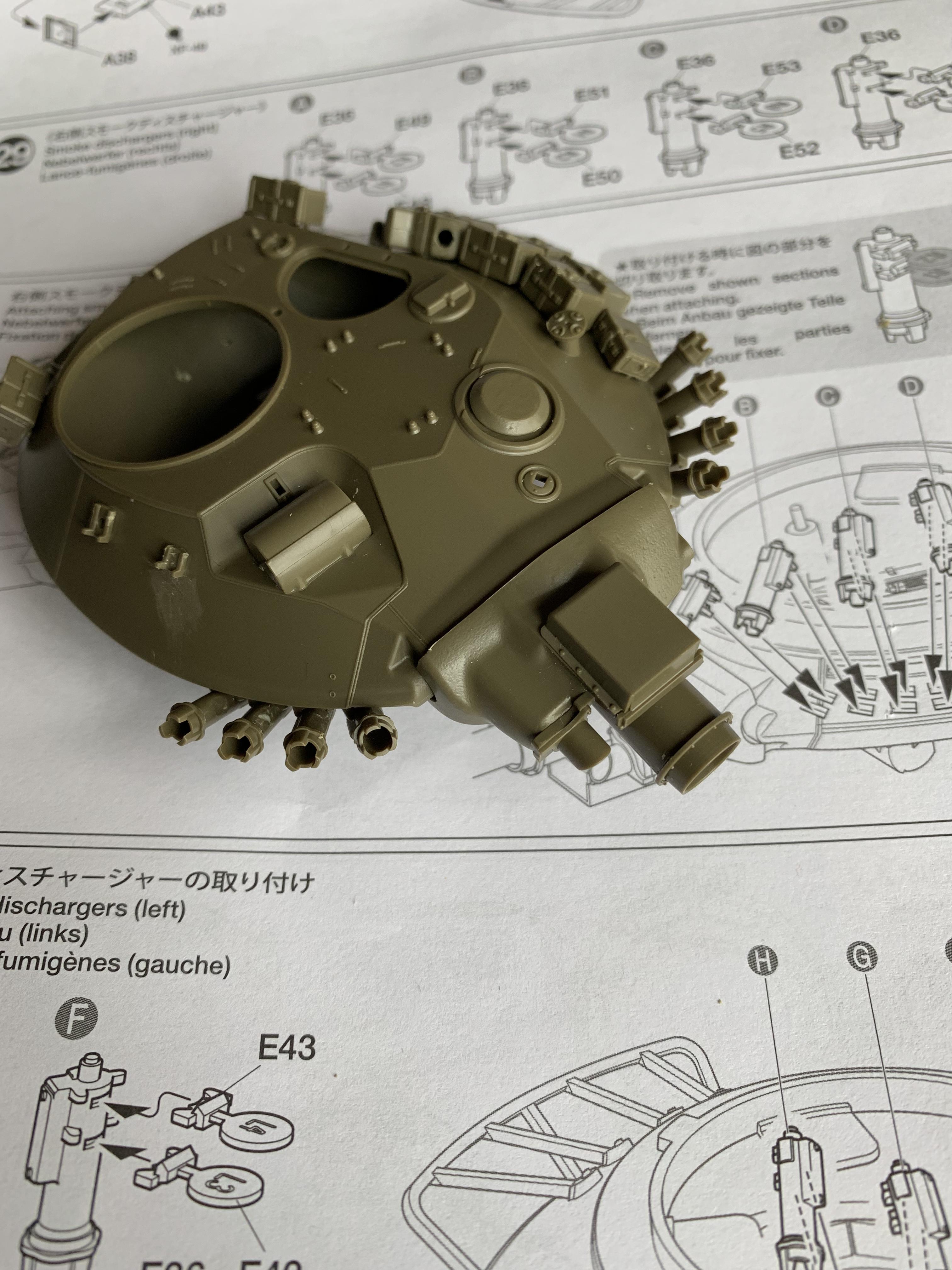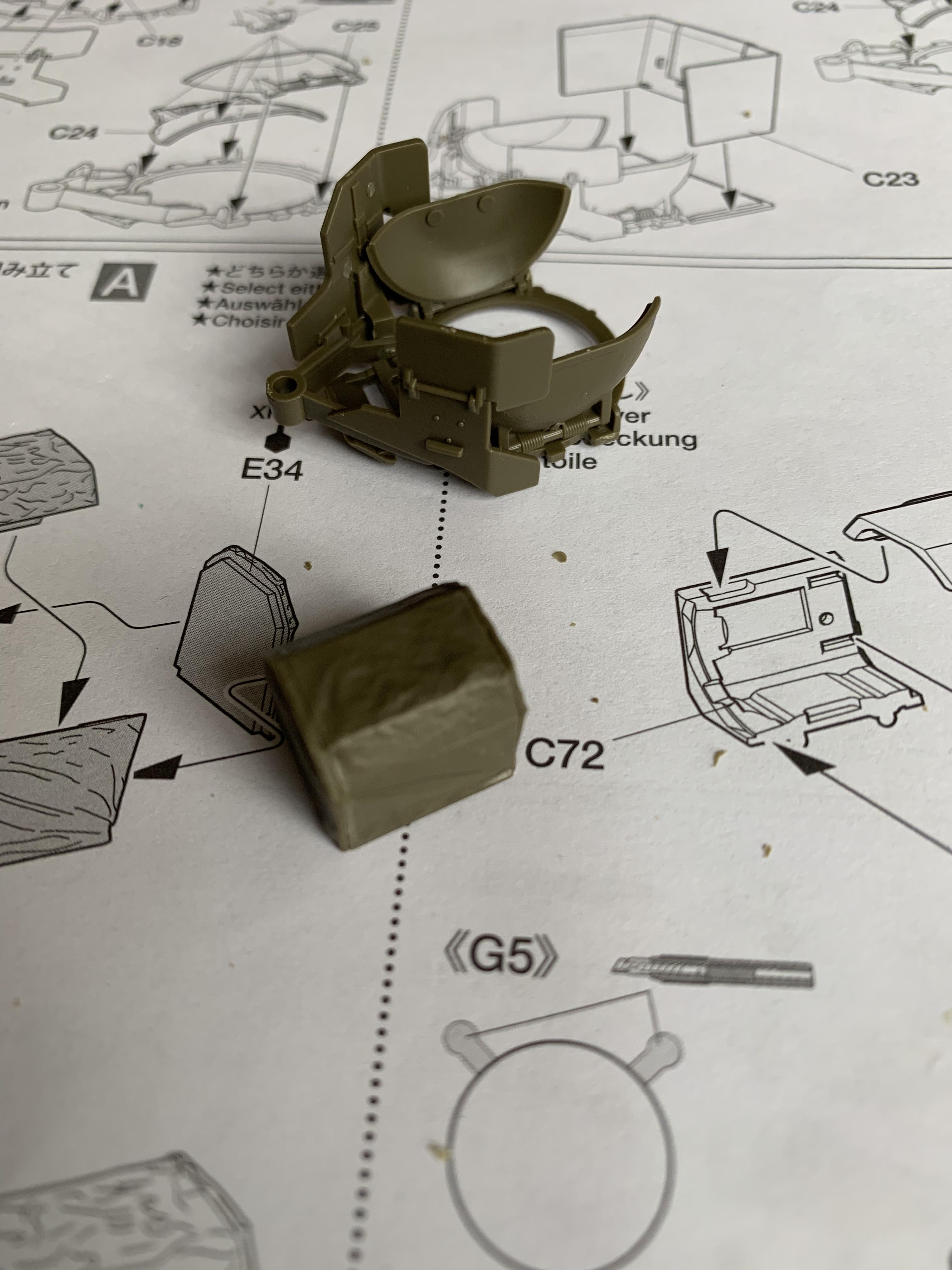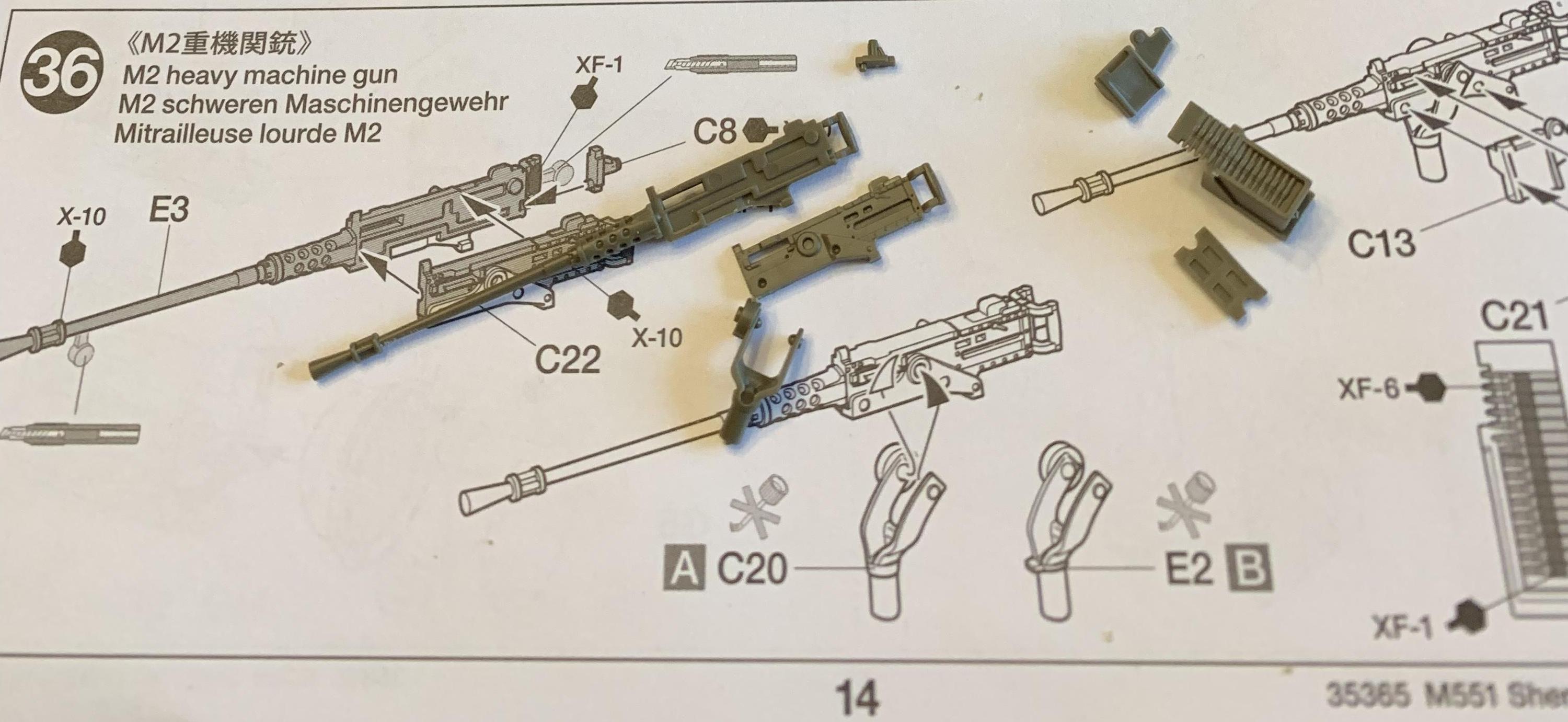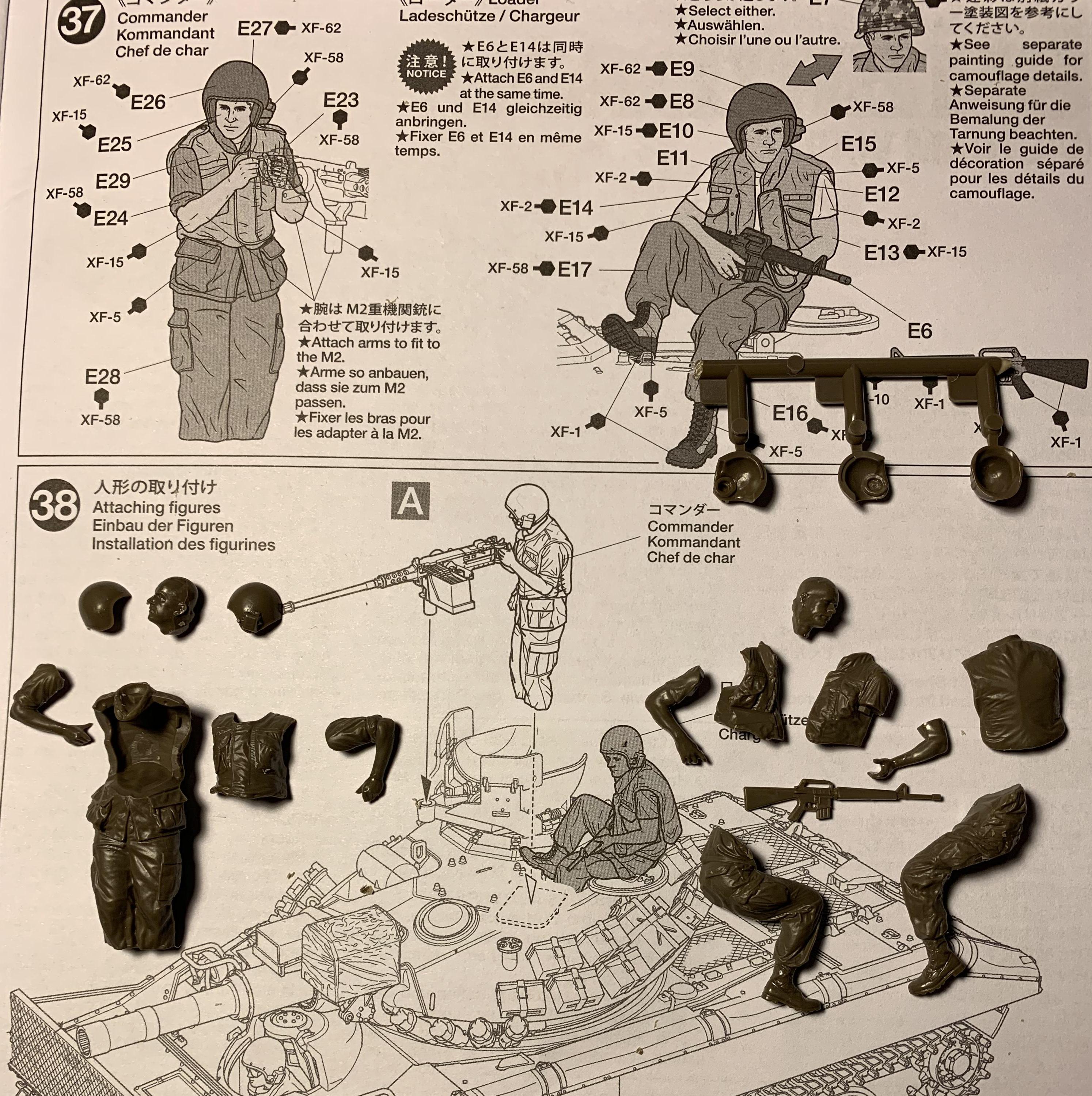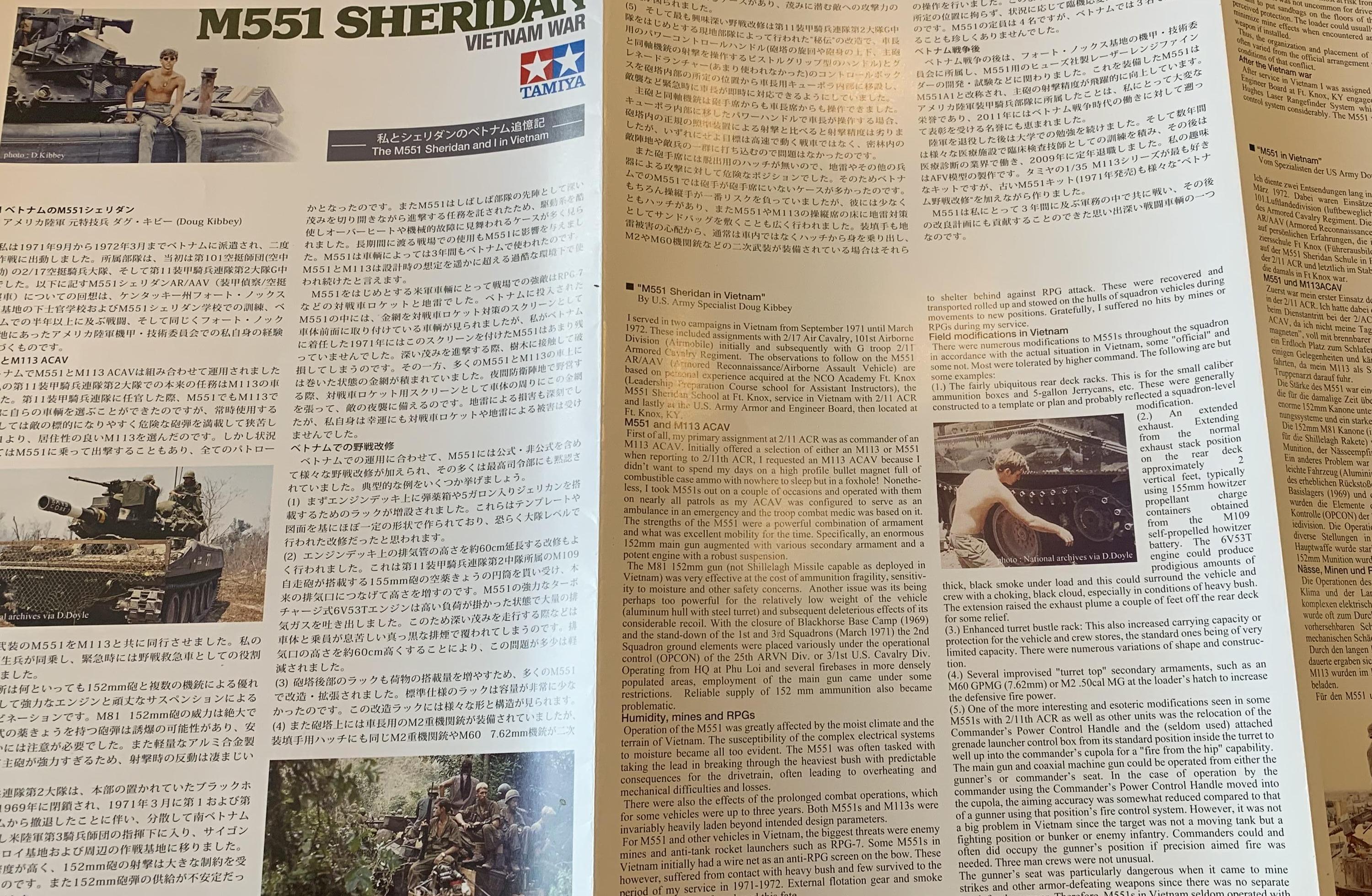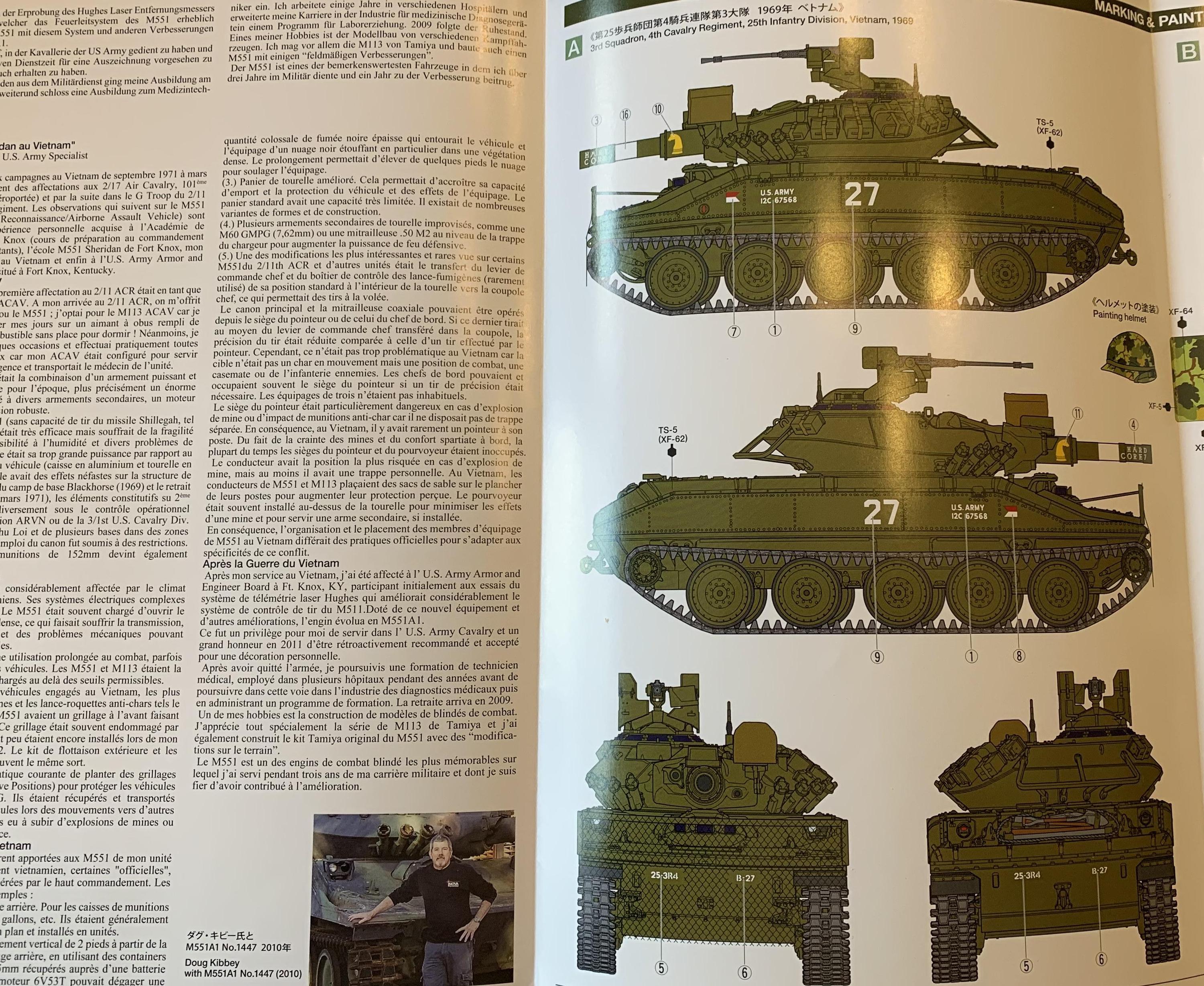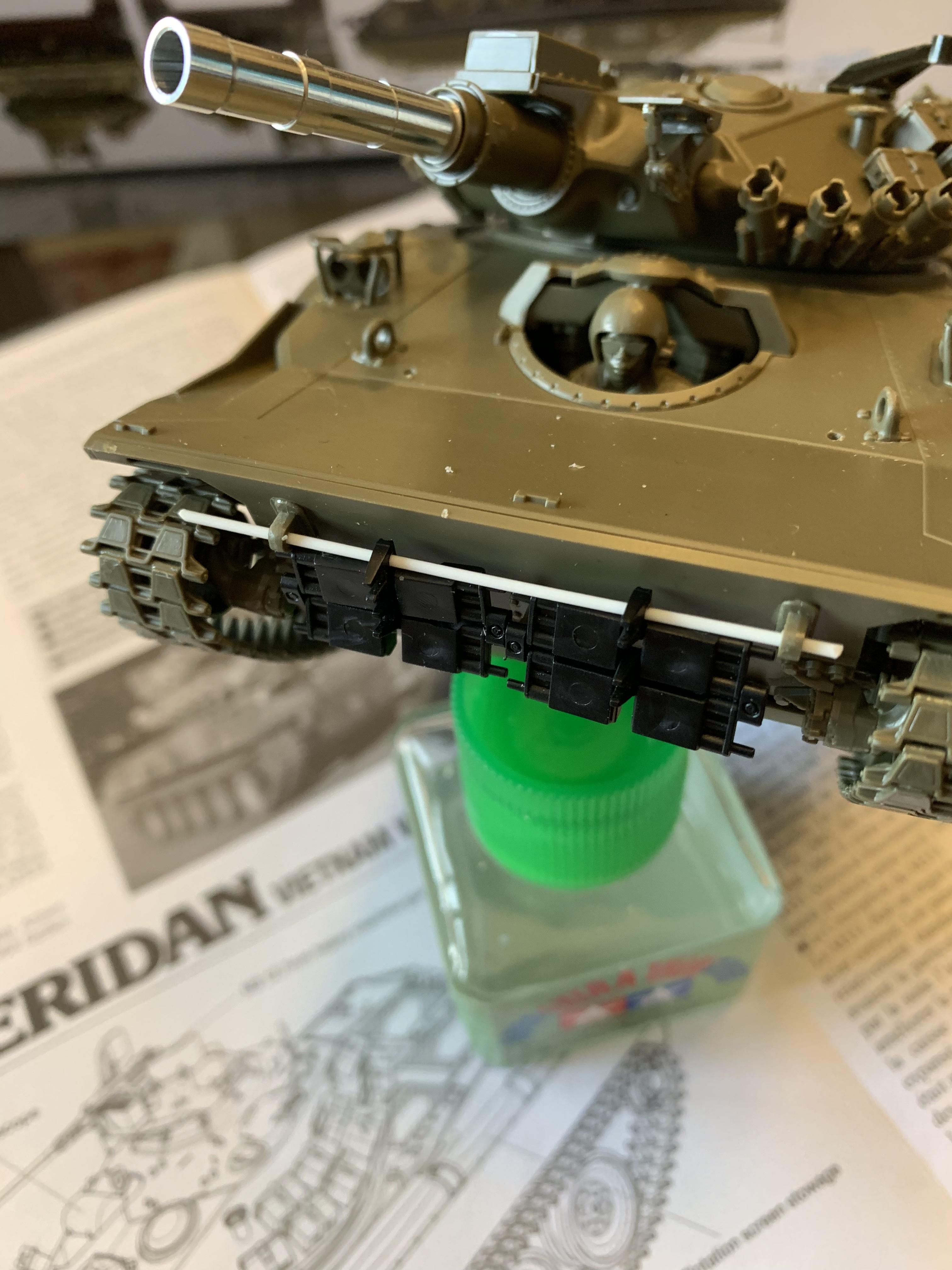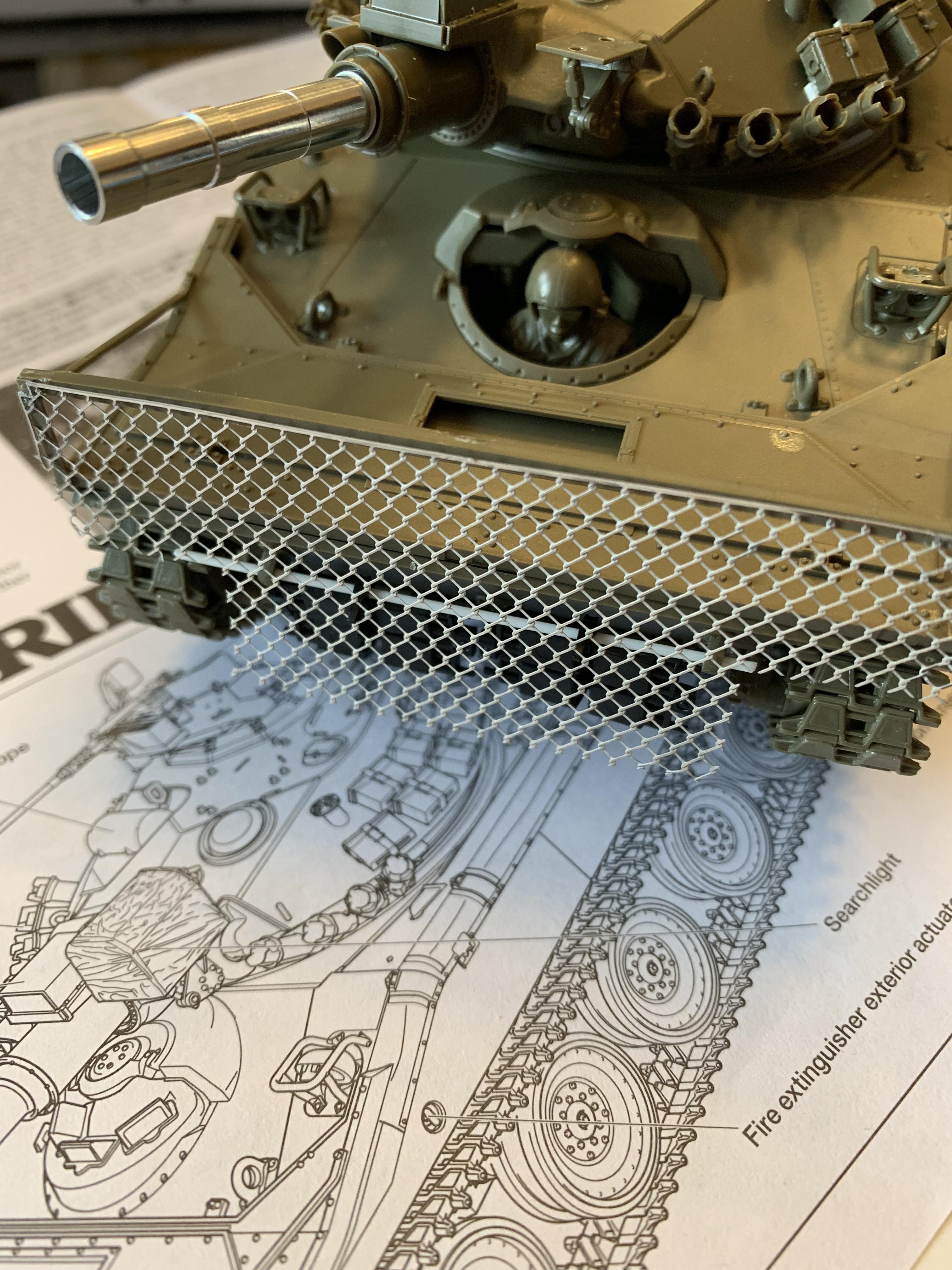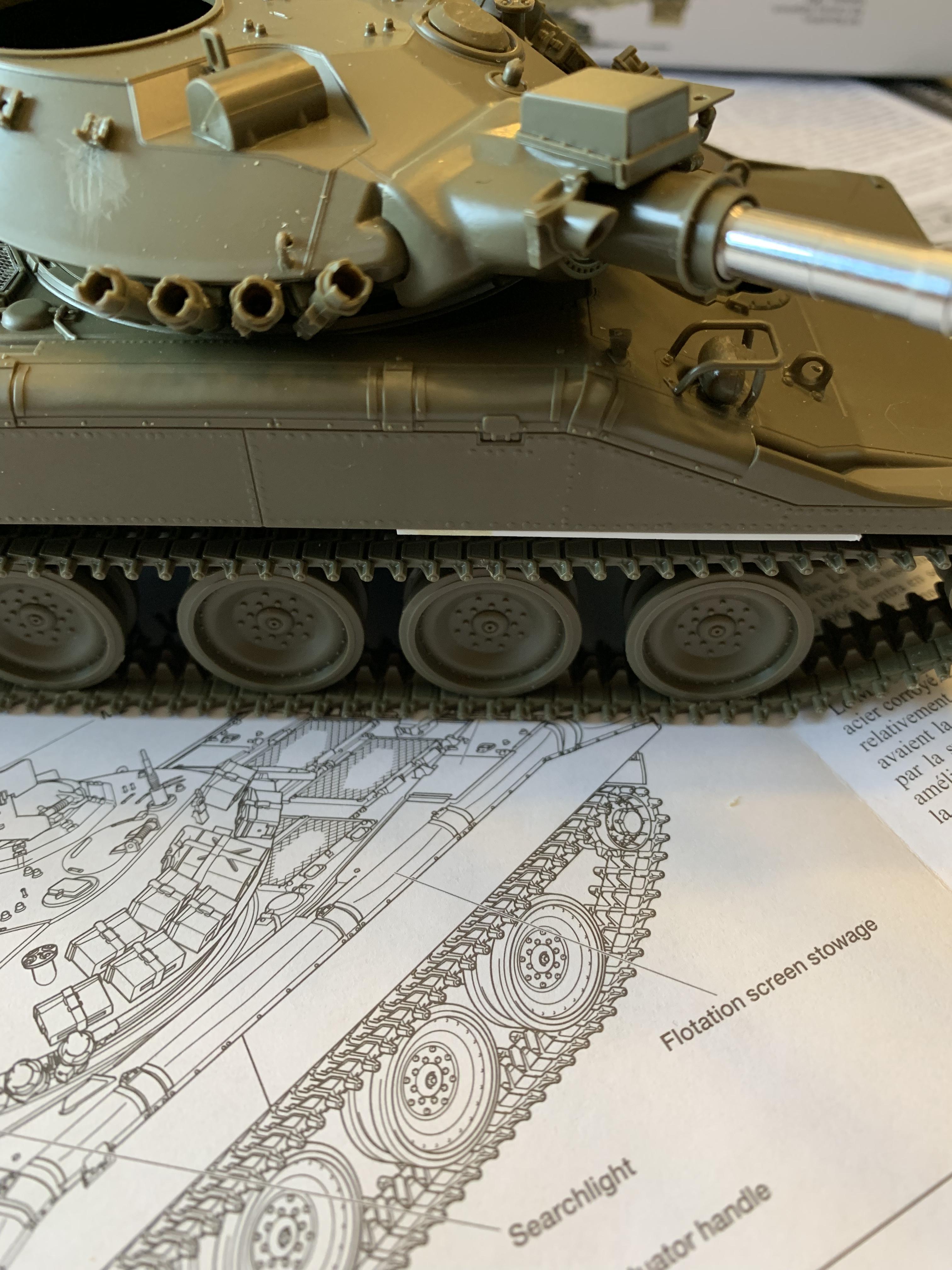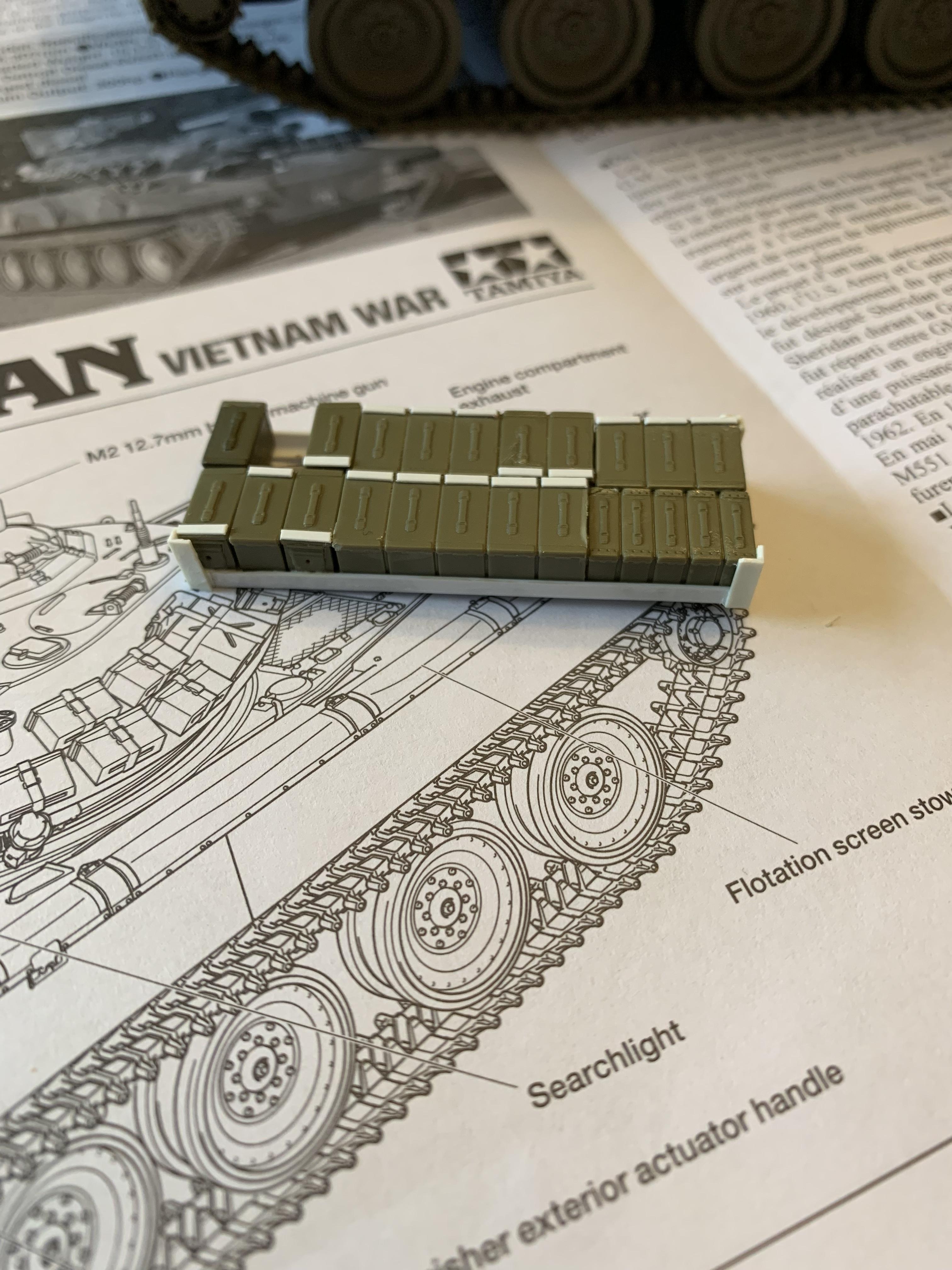Quoted Text
Dennis, I have to disagree just a little, as some of the new Meng, Takom and RFM kits have a lot of detail packed into the box. I'm hoping the RFM Sheridan will follow the pattern they've set with some of the German gear they've marketed lately. I can't help but feel Tamiya is trying to satisfy a different niche with this model-- a quicker build, with some details simplified, at a cheaper price point. But, it's head and shoulders above previous models of the M551. It just disturbs me there are no tie downs or brackets on the turret, some of the details around the hatches are soft, the armor plate on the TCs cupola has simplified detail around the hinges, and the splash guard is not separate--not to mention the shortcut with the screening material. But I think it's ok for the price point. We'll see how RFM does with these details I guess. I should caviat my statements by revealing I'm an old Sheridan crew member, so perhaps it's just that I was just expecting more. I'm still tempted by this kit though as there are some nice features.
VR, Russ
Hi, Russ!

I think that you're basically saying the same thing that I said in different words, when I mentioned that "model manufacturers don't want to spend the extra money"... Of course, you know more about M551s than I do, or probably ever will, simply because you LIVED IN THEM!

Let me explain what I meant a little further:
The fine tooling that would be required for the much more refined details and features that you described would probably have pushed the retail price of this new M551 UP by $10.00-$20.00 per kit, if not MORE. TAMIYA PROBABLY wanted to keep the MSRP of these kits down at reasonable levels in order to get the "average" modeler to buy them. The finer details and extra features of ANY new model kit these days is going to drive the cost of said kits UP exponentially, because the slide-molds that are producing these kits are pretty complicated and very intricately tooled.
Slide-molding involves molds that are made up of MULTIPLE components, rather than just TWO HALVES that come together to mold the parts-sprues. The two mold halves come together, and then the actual molding process begins. The styrene is pre-heated to a near-liquid state prior to being injected into the mold. Nearly simultaneously, compressed air-pressure is also injected into the mold to ensure that this near-liquified styrene fills all of the mold cavities. Sometimes, this doesn't quite happen as it should, and that's how we sometimes wind up with "shorts". Coolant/water is then injected into the mold to cool things down and after a few seconds, the mold halves open to release the sprue(s), which are helped along by what we called "knock-outs". This is the tooling which sometimes leaves those unsightly little circles or "pins" in/on the parts right where we modelers don't need them to be. This whole process is TIMED by the molding machine, which in turn, is set up by the technicians when they are changing out one mold for another. The molds themselves are very heavy- They need to be, because the whole molding process is based on VERY high air-pressure that is necessary to inject the pre-heated plastic into the mold cavities during molding process, AND for the two mold-halves to come together and STAY together. Otherwise, as has happened in some cases, if the mold-halves were to separate while the pre-heated plastic was being injected, there would be a hell of a mess to clean up... Expensive repairs may also be in order...
As I mentioned earlier, slide-molding is a much more complicated process, in that instead of the molds being in two simple halves, there are MULTIPLE components that come into play by sliding together WITHIN the molds in order to make those beautiful parts that we "ooh" and "ahh" over, today. These complicated, multi-part molds ARE HIDEOUSLY EXPENSIVE TO TOOL, AND because of their complexity, they are more labor-intensive to maintain which in the end, is reflected in the retail price of the kit. In addition, it could require up to at least a half-dozen different molds in order to produce the various sprues for the "average" model kit. Now if you're building a TRACKED vehicle, consider all of the extra engineering, implementation and actual machining to produce the slide mold that is required just to produce a single sprue of Indy Links!!!
And it's not just the molds that are expensive. This kind of manufacturing carries a very high overhead- UTILITIES, Research and Development, engineering, maintenance, EMPLOYEES, (How much does the average Japanese factory-worker earn as compared to a Chinese worker doing the same job..?), the molding materials themselves, i.e styrene, vinyl, (Which are petroleum-based materials- Expensive, yes?), PE, etc. Then there are the various insurances, and the list just goes on and on. Overhead in the 21st Century is a killer... You guys all have an idea of how much the prices of utilities ALONE have jumped over the last few years. Consequently, the prices of retail products will always GO UP, unless certain of these products themselves don't sell very well, so then the retailers put on these "BOGO-sales" which we see every so often...
Now, consider this:
Just that tiny, little hole at the "business end" of a 1/35 .50 cal for example, will necessarily involve extra slide-tooling within the confines of that single sprue cavity, within that single slide-mold! This, in turn, will involve an additional ton-and-a-half of extra engineering and machining to produce that particular slide-mold. THAT tiny, little hole ALONE, CAN and WILL drive the price of the mold up by thousands of US dollars, so go ahead and convert that kind of money into Yen... Consider also that the bigger and more complicated the mold, the more it costs to design and manufacture it. That is also why we sometimes see a small extra sprue for weapons, packs, helmets and canteens, etc...
In addition, I need to stress that you are ABSOLUTELY RIGHT in that these models should have had the details and features which you so ably outlined in your post. Having said that, remember that the more complicated ANY manufacturing process is, the more the consumer will PAY. Also bear in mind that these TAMIYA kits are not made in China, (like TRUMPETER, HOBBY BOSS, MENG, TAKOM, RFM, etc). They are manufactured in JAPAN, where pricing for ANYTHING and EVERYTHING IN THAT COUNTRY borders on the insane... Re-read the little passage that I wrote about keeping the cost of this new M551 kit down to "affordable"-levels for the "average" modeler... Why do you suppose that TAMIYA manufactures so many R/C products and 1/24 "curbside" cars as opposed to 1/24 cars that contain detailed engine bays, engines, transmissions, etc..? THIS kind of stuff offsets the money that is involved in TAMIYA producing some of their more detailed models...
Speaking for myself, I would pay that extra $10.00 to $20.00, (or more), per kit and have the details and features that you mentioned. But let me also say that many times, an A/M manufacturer can and will incorporate MORE and FINER detail into their resin and/or PE upgrades than is possible to mold in plastic, even with the latest in slide-mold technology...
Hope I wasn't being too pedantic...

